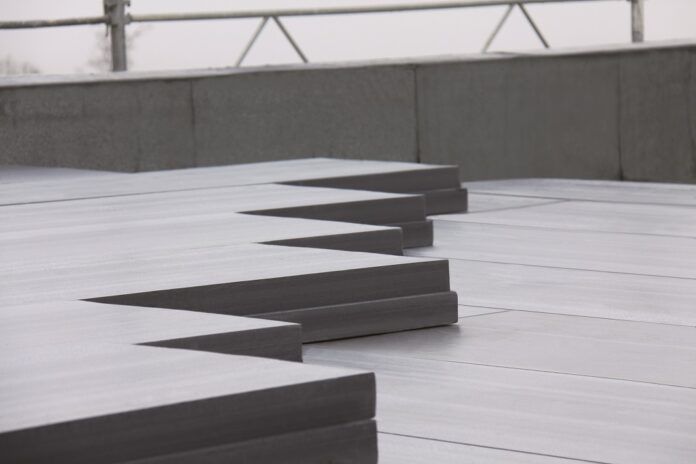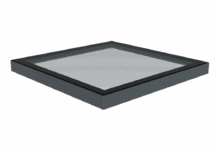Here, read about the many benefits of choosing a high-performance Ravatherm XPS insulation board and the many advantages it has over its rival products.
Increasing the thermal performance of roof insulation is an easy option to boost overall building performance and meet the overall sustainability targets for a structure. Across the industry, it has been typical for 0.15 W/m2K to be the target U-value for an inverted roof, but there is now an increasing demand for roofs that can achieve 0.13 W/m2K to achieve overall building performance required by Part L of Building Regulations.
Using most insulation boards, you need multiple layers to reach this level of performance, however, there is a better way. High-performance Ravatherm XPS X 300 SL or next-generation Ravatherm XPS X ULTRA 300 SL insulation boards require just a single layer which offers several benefits to roofing contractors. They have also been validated by third-party testing services and BBA certificates which provide assurance of performance when used appropriately.
In brief, double layering means twice as much time to install the roof insulation and therefore double the cost of associated labour – and with wages for a gang of six roofers easily exceeding £500 a day outside of London, the cost can mount up quickly. Or, to think of it another way, it allows your team to tackle more projects without increasing manpower, a huge bonus considering the current widespread shortage of labour in the construction sector.
Layering doesn’t just create more work at the job site; it also makes it more difficult to accurately calculate a roof’s U-value – you need to account for the impact of the thin layer of water that will accumulate between insulation layers even when using a water flow reducing layer. When double layering, this can be overcome by using correction factors, as outlined in BBA Bulletin 4 Inverted Roofs – Drainage and U value corrections, but this isn’t an option for triple layering.
With some projects now demanding even greater thermal performance from roofs, 0.10 W/m2k is not unheard of. Only high-performance insulation boards can do the job, without requiring a third layer. As there is no recognised calculation method or long-term test data for triple layer build ups, it shouldn’t be done. Plus, why spend time installing three layers of some materials when a single layer Ravatherm XPS X ULTRA 300 SL might be able to do the same job?
Traditionally, insulation has been bought and sold on a cost per m3 basis, but this doesn’t account for the associated increased labour costs when using multiple layers, or how higher performance materials require a lower volume to do the same job. It is only fair to compare quotes formulated on a cost per m3 basis when you have materials with identical performance. The solution is simple – a shift to evaluating quotes based on cost per m2 and remembering to factor in any supplementary costs as a result of layering.
We should also consider the benefits of needing a lower volume of insulation for each job. For example, a 2,500m2 roof would typically require 550m3 of double-layered insulation to achieve 0.15 W/m2K, whereas a single layer of Ravatherm XPS X 300 SL or Ravatherm XPS X ULTRA 300 SL would require 500m3 or 438m3 respectively.
That’s one or two fewer artics to transport the insulation to a doubtless already busy site, meaning reduced vehicle movements and less time spent unloading and transporting material to the final location for installation, not to mention a reduced carbon footprint associated with material transport and therefore reducing the overall environmental impact of the building under construction.
Another factor linked with the volume of material is storage requirements. Space is always at a premium on a site, even more so by the time it comes to install the roof on a new structure and using lower volumes of insulation means less space is required to store the material ahead of installation.
Finally, the reduced thickness required by opting for high-performance insulation boards makes it easier to maintain level thresholds and have lower balustrade walls, reducing effort across the whole of the roof installation process and making sure you can comply with the requirements of Approved Document M.
To put it simply, there is no reason to compromise. By choosing high-performance insulation for your roofing projects, you can easily deliver exceptional thermal performance, playing your part in the sustainability revolution, while also saving you time and money.




